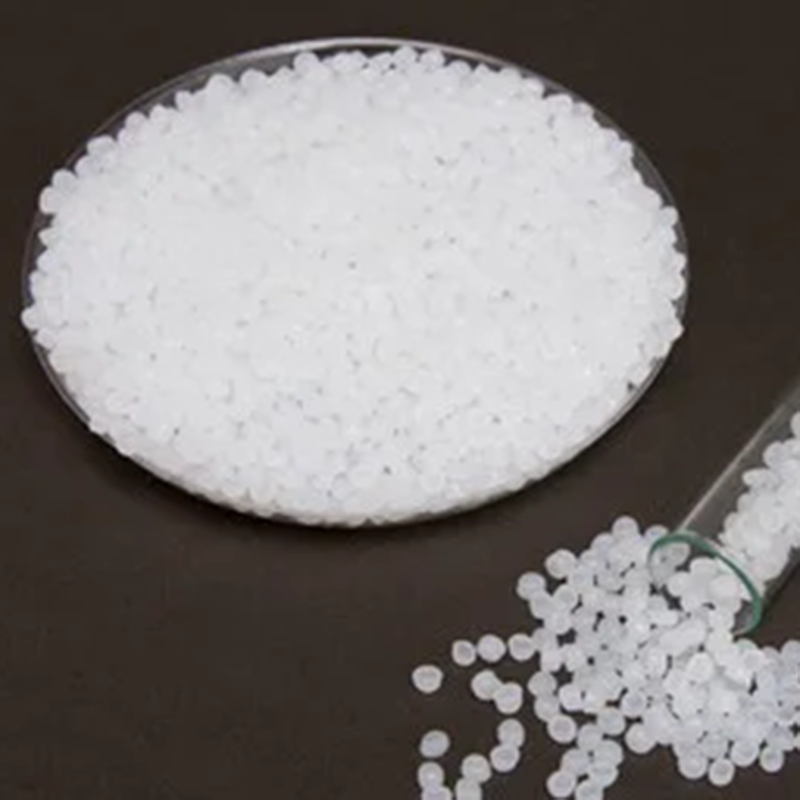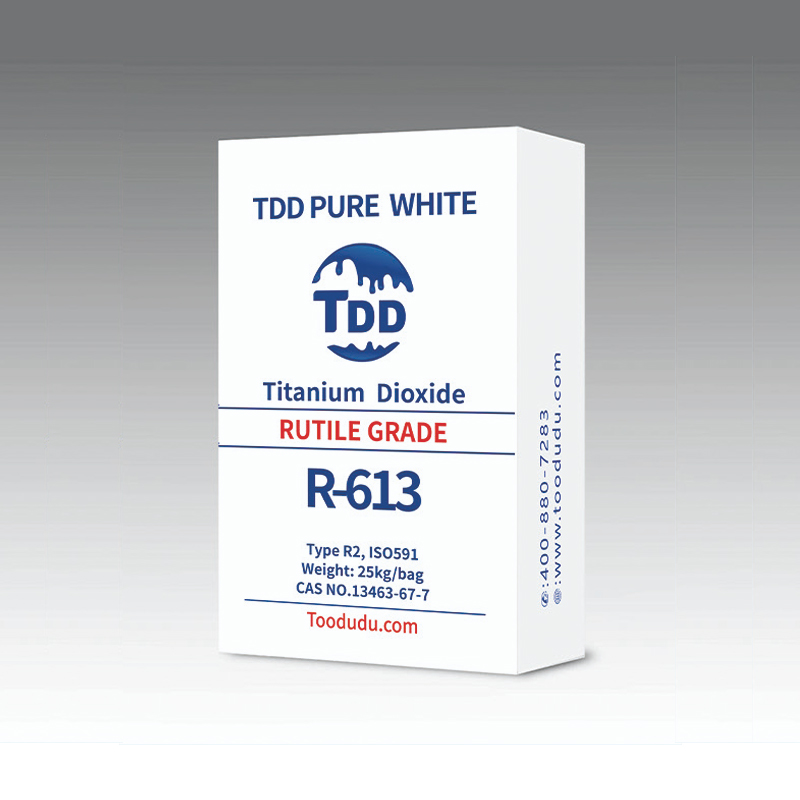Titanium dioxide is an inorganic compound with the chemical formula TiO2. It is a white solid or powdery amphoteric oxide with a molecular weight of 79.866. It is non-toxic, has the best opacity, best whiteness and brightness, and is considered to have the highest performance in the world today. The best white paint. Titanium white has strong adhesion, is not prone to chemical changes, and is always white. Widely used in coatings, plastics, papermaking, printing ink, chemical fiber, rubber, cosmetics and other industries. It has a high melting point and is also used to make refractory glass, glazes, enamels, pottery, high-temperature resistant experimental vessels, etc. Titanium dioxide can be extracted from rutile by acid decomposition or obtained by decomposing titanium tetrachloride. Titanium dioxide exists in three allotropic forms in nature: rutile, anatase and plate titanium. In addition, there are several artificially synthesized crystal forms.
On October 27, 2017, the World Health Organization’s International Agency for Research on Cancer released a preliminary reference list of carcinogens. Titanium dioxide is included in the list of Class 2B carcinogens.
Relative density #
Among commonly used white pigments, titanium dioxide has the smallest relative density. Among white pigments of the same mass, titanium dioxide has the largest surface area and the highest pigment volume.
Pigment name
Dielectric constant #
Due to its high dielectric constant, titanium dioxide has excellent electrical properties. When measuring certain physical properties of titanium dioxide, the crystallographic direction of the titanium dioxide crystals should be considered. For example, the dielectric constant of the rutile type varies with the direction of the crystal. When it is parallel to the C-axis, the measured dielectric constant is 180, when it is at right angles to this axis, it is 90, and the average value of its powder is 114. The dielectric constant of anatase titanium dioxide is relatively low, only 48.
Conductivity #
Titanium dioxide has semiconductor properties, its conductivity increases rapidly with temperature, and it is also very sensitive to oxygen deficiency. For example, rutile titanium dioxide is an electrical insulator at 20°C, but when heated to 420°C, its conductivity increases 107 times. Slightly reducing the oxygen content will have a special impact on its electrical conductivity. According to the chemical composition, the electrical conductivity of titanium dioxide (TiO2) is <10-10s/cm, while the electrical conductivity of TiO1.9995 is as high as 10-1s/cm. The dielectric constant and semiconductor properties of rutile titanium dioxide are very important to the electronics industry, which uses these properties to produce electronic components such as ceramic capacitors.
Hardness #
According to the 10-point Mohs hardness scale, rutile titanium dioxide is 6~6.5 and anatase titanium dioxide is 5.5~6.0. Therefore, anatase type is used in chemical fiber matting to avoid wearing the spinneret holes.
Application areas #
Industrial applications #
Titanium dioxide is an important white pigment and porcelain glaze. Used in paint, ink, plastic, rubber, paper, chemical fiber, watercolor pigment and other industries.
Titanium dioxide is the whitest thing in the world. 1 gram of titanium dioxide can paint an area of more than 450 square centimeters snow-white. It is 5 times whiter than the commonly used white pigment – zinc barium white, so it is the best pigment for preparing white paint. The amount of titanium dioxide used as pigment in the world reaches hundreds of thousands of tons per year. Titanium dioxide can be added to paper to make the paper white and opaque. The effect is 10 times greater than other substances. Therefore, titanium dioxide must be added to banknote paper and art paper.
In order to lighten the color of plastic and soften the luster of rayon, titanium dioxide is sometimes added.
In the rubber industry, titanium dioxide is also used as a filler for white rubber.
The photochemical properties of semiconducting titanium dioxide have made it useful in many areas such as air, water and fluid purification. Photocatalysts doped with carbon or other heteroatoms can also be used in sealed spaces or areas with scattered light sources. When used in coatings on buildings, pavements, concrete walls or roof tiles, they can significantly increase the breakdown of airborne pollutants such as nitrogen oxides, aromatics and aldehydes.
Ultra-fine titanium dioxide has excellent UV-shielding properties and transparency. It is widely used in cosmetics, wood protection, food packaging plastics, durable household films, man-made and natural fibers, and clear coatings. The special optical effects in metallic glitter paints have attracted attention and application in high-end car paints.
Titanium dioxide is a semiconductor with small particle size, large specific surface area, loose porous, and rough surface. It is widely used as photoanode material in dye-sensitized solar cells. Many researchers use titanium dioxide as a prototype and conduct hydrothermal method on it. , electrospinning and other methods for modification, and at the same time, metal substances, inorganic substances and other doping reactions are used to prepare photoanode with excellent performance, and then assembled into dye-sensitized solar cells.
Titanium dioxide can effectively prevent the unbridled growth of microorganisms through photocatalysis, thereby reducing the amount of harmful environmental components. The antibacterial mechanism is that titanium dioxide is activated by light, and the interaction between electron hole pairs, oxygen molecules, and hydroxide ions stimulates free radicals, causing a chain reaction, destroying bacterial proteins, and achieving the sterilization effect.
Food application #
The U.S. Food and Drug Administration stipulates that titanium dioxide can be used as a white pigment in all foods, and the maximum usage amount is 1g/kg. The pigment additive titanium dioxide can be safely used in general coloring foods, subject to the following regulations:
(1) The amount of titanium dioxide does not exceed 1% of the weight of the food.
(2) Colored foods shall not be used in accordance with the special standards promulgated in Article 401 of the Act, unless there are similar standards that allow the addition of pigments.
(3) For colored foods, the edible pigment additive titanium dioxide can contain appropriate diluents as safe pigment additives, as follows: Silica, as a dispersing aid, the content does not exceed 2%.
Product adaptability: cold fruits, jelly, fried foods, cocoa products, chocolate, chocolate products, hard candies, polished candies, gum-based candies, puffed foods, candy chocolate product coatings, mayonnaise, salad dressing, jam, solids Beverages, konjac gel foods, etc.
Environmental Protection #
Purifying air #
Titanium dioxide, as a catalyst for light coating pigments, is not only an environmentally safe cleaner, but also can save energy and protect environmental resources.
Early Japanese and British scientists coated titanium dioxide on the surface of paving stones on urban roads to clean the road air. Titanium dioxide can be mixed with asphalt to reduce airborne pollutants. Concrete or asphalt containing titanium dioxide can purify the air as cars pass by, eliminating 25% to 45% of nitrogen oxides in vehicle emissions. Coating titanium dioxide on the concrete surface has an equally effective air cleaning effect
Cool the earth #
In May 2012, British scientists proposed a bold idea. They believed that the purpose of cooling the earth could be achieved by spraying enough titanium dioxide into the stratosphere to reflect sunlight. This could effectively offset the various effects of global warming. adverse climate factors.
Because titanium dioxide can effectively reflect direct sunlight, has stable properties and has good hiding ability, it can work for a long time if sprayed in the stratosphere. British scientists proposed that high-altitude balloons can be used to bring this chemical into the stratosphere and then release it. Once titanium dioxide is evenly distributed in the Earth’s stratosphere, it can effectively reflect sunlight and thereby cool the Earth.
Peter Davidson, a chemical engineer and president of the British consulting company Davidson Technology, is the person in charge of this project. He said that only 3 million tons of titanium dioxide need to be transported to the earth’s stratosphere to form a layer of thickness in the earth’s stratosphere. A 1mm protective layer, but the effect it can play is huge – enough to offset the greenhouse effect caused by twice the current amount of carbon dioxide in the atmosphere.
Sunscreen Cosmetics #
Because ultraviolet rays are very harmful to the human body, developed countries have paid more attention to the research and development of sunscreen products in recent years, and have successively launched a variety of anti-UV fibers, plastics, films, coatings, as well as sunscreen creams, foundations, and lipsticks. , mousse, baking ointment and other sunscreen cosmetics. In recent years, our country has also increased the research and production of sunscreen cosmetics.
However, in the past, sunscreens were mostly organic compounds such as benzophenones, o-aminobenzophenones, salicylates, para-aminobenzoic acids, and cinnamates. Therefore, they were unstable, had a short lifespan, and had serious side effects. , has certain toxicity and irritation. If added in excess, it will cause chemical allergies and may even lead to skin cancer. Nano-titanium dioxide is an inorganic component, has excellent chemical stability, thermal stability and non-migration, strong achromatic power, hiding power, low corrosiveness, good dispersibility, and is non-toxic, odorless, Non-irritating, safe to use, and also has sterilizing and deodorizing properties. More importantly, as mentioned above, nano-titanium dioxide can not only absorb ultraviolet rays, but also emit and scatter ultraviolet rays, so it has strong anti-ultraviolet ability. Compared with the same dose of organic anti-ultraviolet agents, its absorption peak in the ultraviolet region is Higher; and nano-titanium dioxide has a blocking effect on both medium-wave and long-wave ultraviolet rays, unlike organic anti-UV agents that only have a shielding effect on medium-wave or long-wave ultraviolet rays. In particular, due to its finer particles, the finished product has high transparency and can transmit visible light. When added to cosmetics, the skin will be naturally white, overcoming the shortcomings of some organic matter or pigment-grade titanium dioxide that are opaque and make the skin appear unnaturally pale. Because of this, nano-titanium dioxide quickly received widespread attention and gradually replaced some organic anti-UV agents, becoming a physical shielding anti-UV agent with superior performance in today’s sunscreen cosmetics.
As people’s living standards improve and international competition intensifies, the research and development of safe and efficient sunscreen cosmetics will gradually increase. Today, the sunscreen cosmetics market in developed countries has shown strong vitality. From 1999 to 2000, annual sales in the United States reached US$737 and US$765 million respectively, and in the UK reached US$245 and 270 million respectively. In recent years, they have grown at rates of more than 20% and 10% respectively, and the amount of nano-titanium dioxide has also increased year by year. magnitude growth. The annual demand for nano-titanium dioxide in Japanese anti-UV cosmetics is more than 1,000t, and the amount used in textiles, plastics, and rubber products is even greater.
Judging from the development trend of sunscreen cosmetics, one is inorganic sunscreen agents replacing organic sunscreen agents, and the other is bionic sunscreen. The latter costs more and is difficult to promote now. The former is moderately priced and has excellent sun protection properties, so it is generally favored. In particular, nanometer titanium dioxide has good development momentum and market potential due to its superior performance and application prospects.

 2024-03-10
2024-03-10 



